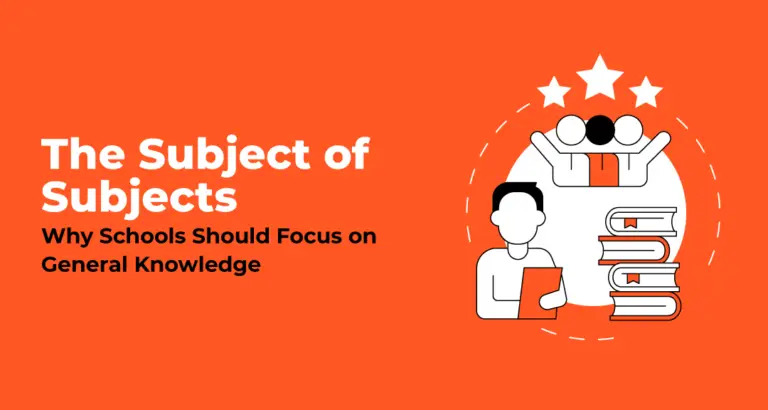The Science of Phonics: Why It’s Essential for Early Childhood Education
- Teaching
- February 22, 2025
- VOLT Learning
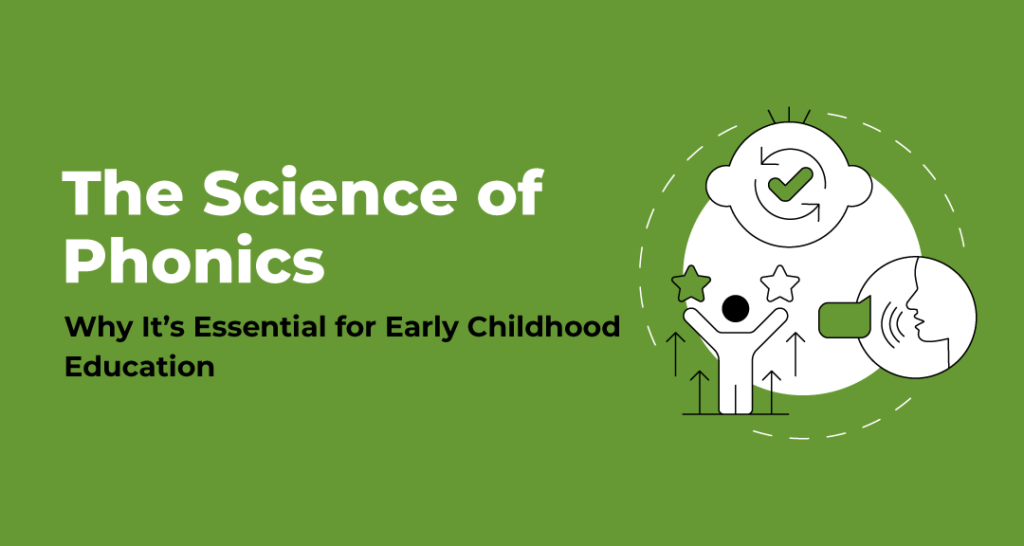
Research shows that children who learn phonics instruction strongly in early education grow into confident readers. Systematic phonics instruction is pivotal in improving young learners’ ability to decode words and paves the way to reading success. It is also believed that during Early Childhood Care and Education (ECCE), phonics plays a game-changer in transforming a child’s vocal speech into written language by bridging the literacy gap. But what exactly is phonics, and why is it such a game-changer in early literacy skills? Let’s explore.
What is Phonics?
Phonics is an educational approach that connects letters to their sound elements. The teaching system facilitates word decoding through sound pattern recognition instead of memorization techniques. Early Childhood Care and Education (ECCE) considers phonics essential to early literacy skills development.
Words in the English language consist of individual letters that create particular sound elements. Phonics instruction teaches students to write these words correctly. Decoding unfamiliar words through this reading method correctly. This method of decoding unfamiliar words
For example:
- The sequence of sounds in the word “cat” consists of /k/ followed by /æ/ followed by /t/.
- The three sounds that create the word “ship” are /ʃ/ followed by /ɪ/ then /p/.
Mastery of these word patterns enables students to decode new words independently. Education experts and researchers agree that phonics instruction is the most efficient method for teaching reading skills to children.
Strong phonics skills demonstrate positive research-based outcomes, which include:
- Word recognition improves among children who can quickly identify and read written words.
- Better reading comprehension emerges when children find it simpler to decode words because their focus shifts to understanding written material.
- The knowledge of letter-sound correspondences enables children to spell words correctly.
- Children gain reading independence and increased motivation to read because of improved confidence.
The Science Behind Phonics? Let’s Understand
The process of learning to read is deeply rooted in cognitive science. When children recognize letter-sound relationships, they activate areas of the brain associated with decoding, comprehension and language processing. Phonic instruction stands as a crucial component throughout the journey of reading proficiency.
Teaching phonics with systematic instruction under the expert guidance of a teacher is the foundation step in developing strong reading and writing skills. It lets children decode words, improve comprehension and build lifelong literacy confidence.
A sequential framework for teaching reading consists of five essential pillars: phonemic awareness, phonics instruction, vocabulary development, fluency instruction, and comprehension methods. Mastery of each essential reading skill component depends on effective instruction from knowledgeable educators, which improves students’ reading ability.
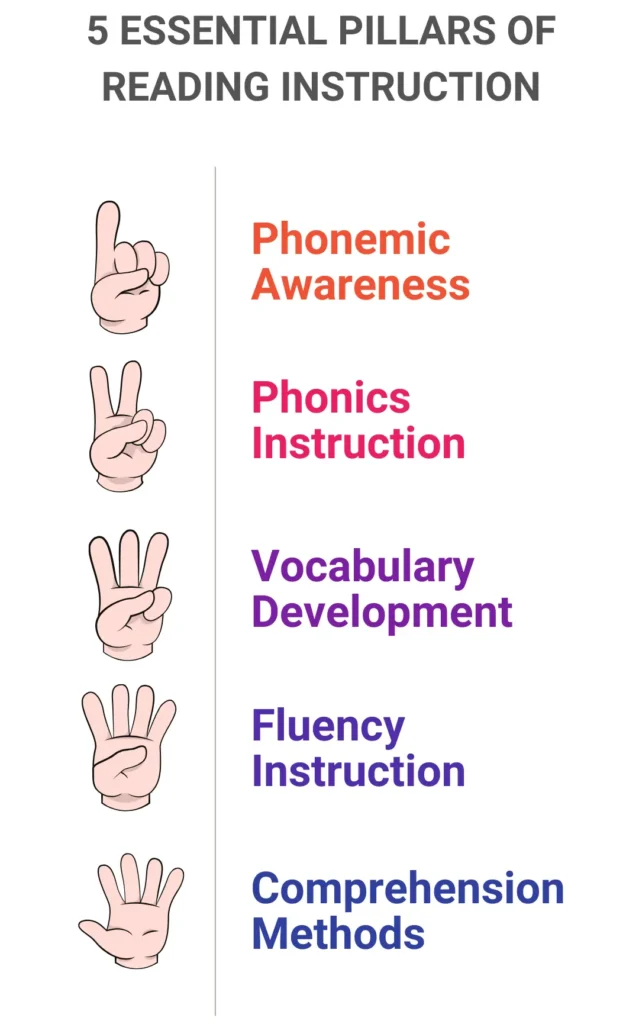
Consistent phonics instruction enables children’s brains to develop neural pathways that enhance word decoding while making it more instinctive. Reduced cognitive pressure helps children focus more on text meaning than on word recognition. Combining hearing, seeing, and touch throughout phonics instruction improves retention and transforms reading education into an intuitive, natural process that happens automatically with time.
How Does Phonics Support Early Childhood Education?
The journey of learning phonics provides children with more than simple reading instruction since it builds essential literacy characteristics which shape their academic growth throughout life. Early Childhood Care and Education (ECCE) significantly benefit from phonics in the following manner:
- Instructions based on phonics enable students to separate words into phonemes, after which they learn to combine these sounds. When children learn to break words into sounds, their ability to decipher words becomes quicker, resulting in improved reading fluency. This method enhances their reading experience because they no longer must spend time on individual words.
- The ability of students to comprehend better strengthens through the relief of phonological work because their mental resources can focus on deriving meaning from text. Acquiring such reading abilities lets students make better sense of text while making deeper connections as they draw inferences from the content.
- Phonic patterns are great for educating students about spelling rules. When children understand that “ck” occurs as the terminal phonetic element for short vowel words (“duck” and “sick”), they can employ this rule in their spelling efforts. When students learn correct sound relationships through phonics, their spelling abilities improve.
- Children who read fluently gain confidence and develop an enthusiastic independent reading habit. Learning phonics helps students overcome reading frustration, allowing them to experience pleasure and success while reading. Students who feel confident while reading tend to study a broader range of books, develop questions, and continue their education throughout life.
Practical Ways to Incorporate Phonics in Early Learning
Here are some engaging ways to make phonics fun and interactive, inspired by VOLT Learning phonics books:
- Incorporate Phonics into storytime
Reading phonics-based stories helps children recognize letter sounds in context. Newly launched VOLT Phonics books include engaging stories with repetitive sound patterns, making it easier for kids to grasp phonics rules naturally. For example – in the book, there is a story on the letter S wherein children would be engaged in a “see and say sound” activity.
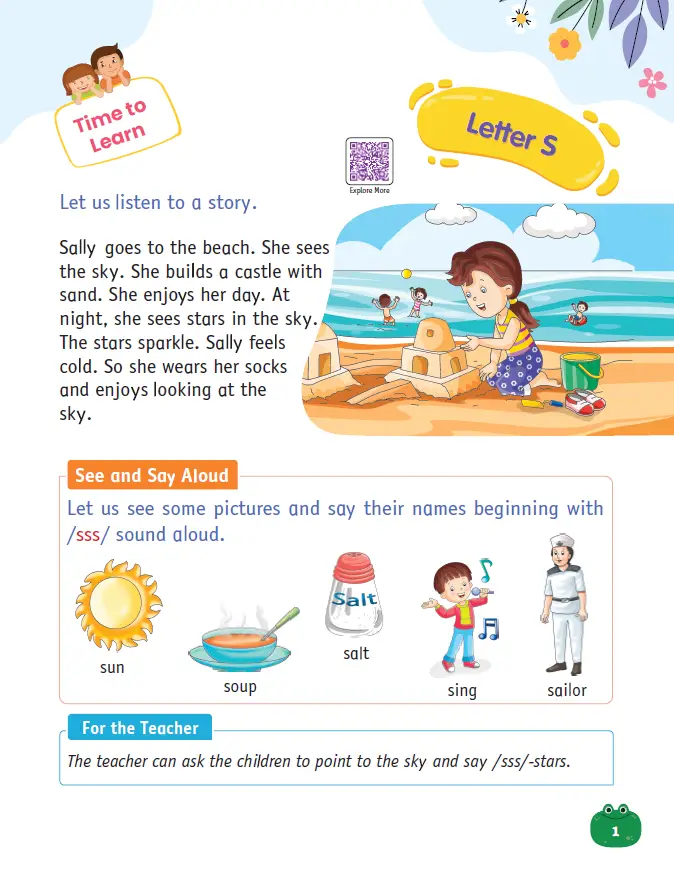
(VOLT New Junior Phonics – Nursery)
- Use songs and rhymes to reinforce sounds
Phonics songs and rhymes enhance retention by using rhythm and melody. The VOLT phonics books for Nursery, LKG and UKG feature playful rhymes that make learning letter sounds an enjoyable experience for kids. For example – Long sound a (as in ai) where the teacher will sing a rhyme having a sound.
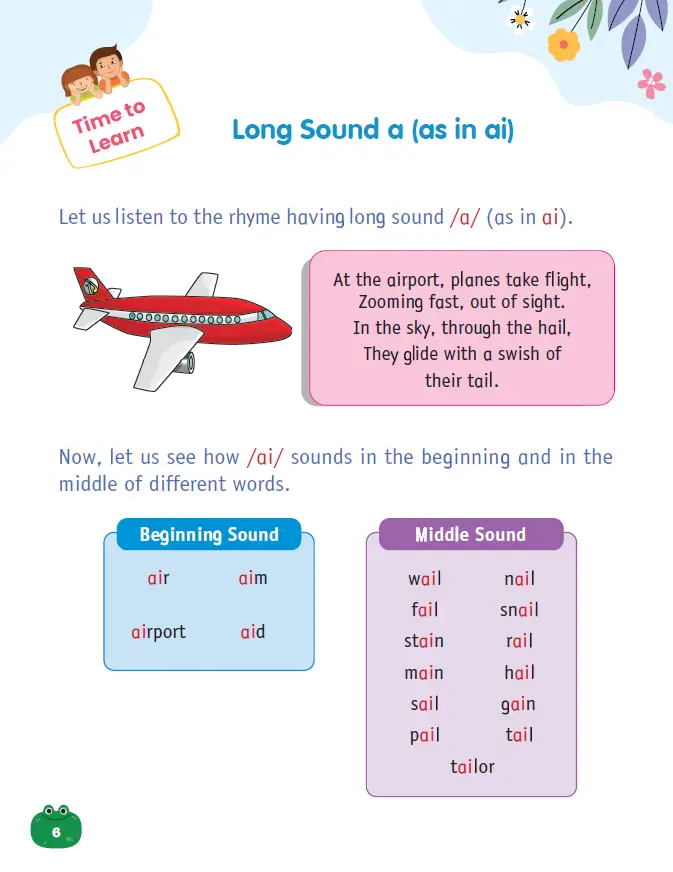
(VOLT New Junior Phonics – Upper KG)
- Encourage writing practice and activities
Writing strengthens the connection between sounds and letters. The VOLT Phonics book offers dedicated practice spaces and hands-on activities reinforcing learned concepts through writing exercises. For example, the book has a creatively planned practice exercise where students observe pictures and write the missing initial blends to complete their names.
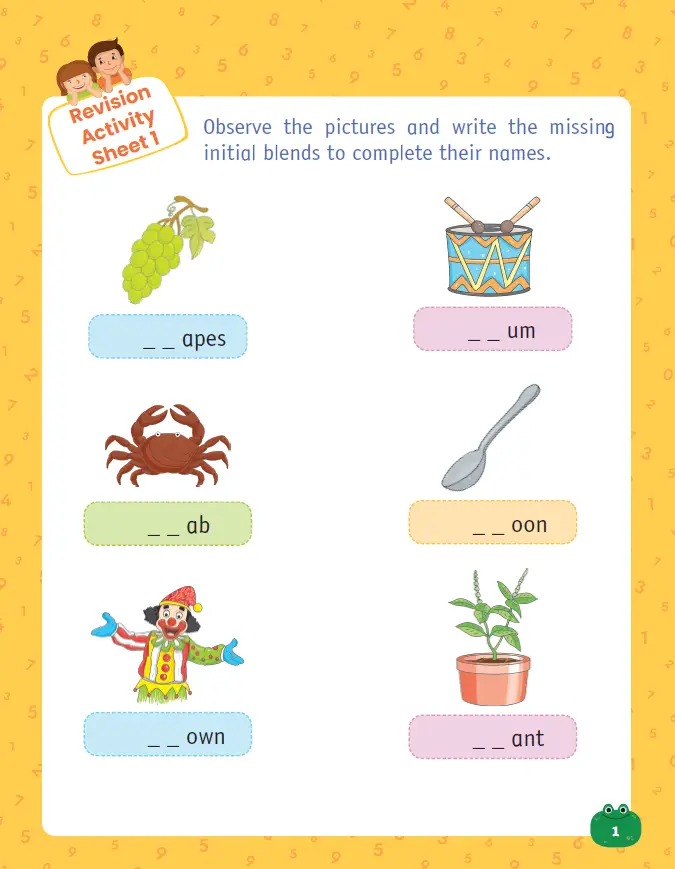
(VOLT New Junior Phonics – Upper KG)
- Create Phonics artwork-based assignments
Hands-on activities make phonics more engaging. For example, in the VOLT phonics Nursery book, there are many exercises wherein kids will be engaged in creative art projects, like saying the name of the pictures, and colouring them, which help reinforce sound recognition playfully.
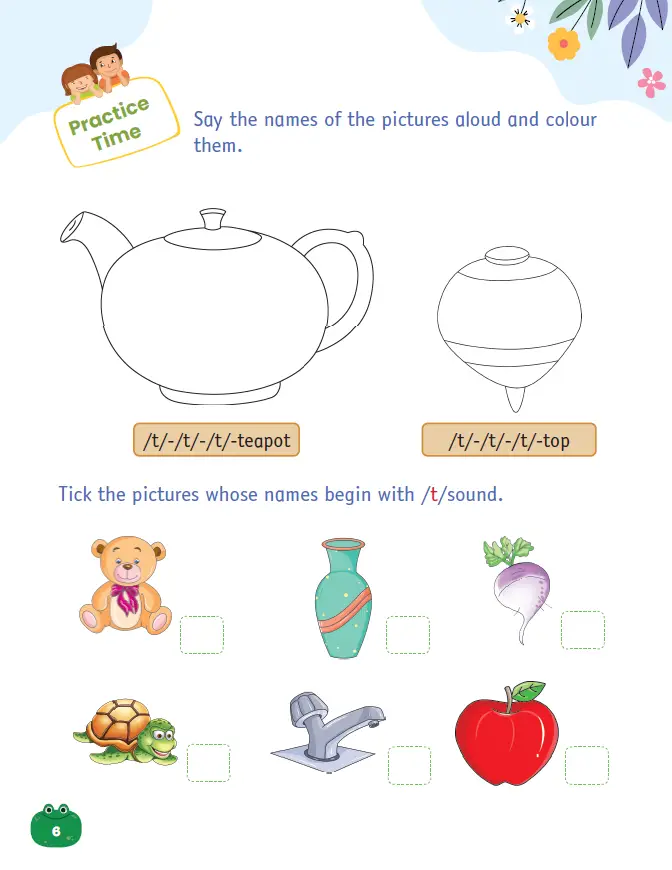
(VOLT New Junior Phonics – Nursery)
Phonics Challenges: Quick Tips to Overcome Common Obstacles
Phonics instruction has many advantages, but this learning practice is prone to many obstacles. Some of the most common phonics challenges that young kids often struggle to overcome during their early years are:
- Sound recognition: The primary obstacle confronting young students during their development. Children commonly have problems distinguishing certain sounds, remarkably similar phonetic pair sounds like /b/ and /d/ or /f/ and /v/, as this sound grouping causes difficulty decoding words. Teachers can use hands-on multisensory instruction with visual signals, hand gestures, and tactile tracing activities in the sandbox to support students in sound recognition. VOLT Learning phonics books use repetition and interactive activities to help students understand sounds through their designed programs for those with sound recognition difficulties.
- Lack of student engagement occurs when phonics instruction becomes repetitive or complex, resulting in children’s immediate withdrawal from learning activities. Keeping phonics lessons engaging requires implementing teaching tools that combine storytelling with phonics songs and digital educational materials. VOLT Learning phonics books attract learners through their combination of entertaining rhymes, vibrant imagery, and interactive educational exercises, thus helping students effectively master phonics.
- Inconsistent practice is another major obstacle students face when learning phonics. Regular phonics practice follows a schedule, yet busy daily activities sometimes postpone it. Mastering phonics skills mainly depends on consistent practice. Parents and teachers must implement phonics sound charts and flashcards and play simple games to sustain learning activities. Educational technologies featuring VOLT phonics videos and interactive features supply scheduled practice opportunities that deliver classroom value and home-based advancement for students.
How Do VOLT Learning Phonics Books Make Teaching Easier?
Teaching phonics doesn’t have to be complicated! VOLT Learning phonics books provide a structured, engaging, and effective way for teachers to introduce phonics to young learners. With interactive stories, rhymes, digital resources, and creative activities, these books ensure children build strong early literacy skills with confidence. By incorporating phonics into early education classrooms, you, as a teacher, can help children learn how to read, write, and spell using sounds or phonemes!
>> Please Share



